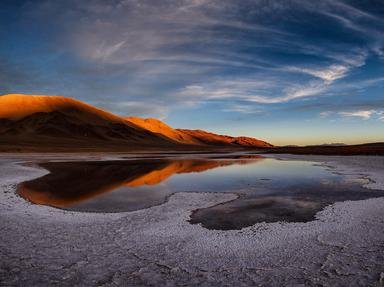Quiz Answer Key and Fun Facts
1. The element 'argent' is silver on the periodic table, and Argentina is named for it. True or False?
2. Argentina's population is resoundingly over 90% which religion?
3. Buenos Aires, the capital city, translates to what in English?
4. The Argentine economy began a slow recovery in 2002, which has been led by which factors?
5. The Andes Mountains are located between Argentina and which country?
6. The political arena was dominated by two rival powers in the early 20th century. They were whom?
7. Argentina borders the two landlocked countries in South America. What are they?
8. To the south of Argentina lies a passage named for an early explorer. Which one?
9. Argentina covers about 1.1 million square miles and has what rank in South America in relation to size?
10. Argentina covers a wide range of climate and topography. Which of these is NOT one of its four prime geographical areas?
Source: Author
alexis722
This quiz was reviewed by FunTrivia editor
Tizzabelle before going online.
Any errors found in FunTrivia content are routinely corrected through our feedback system.


